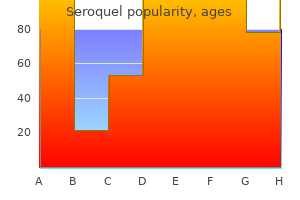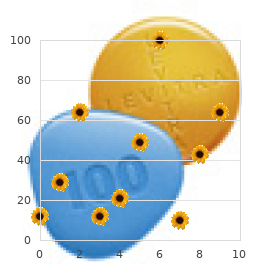Jon M. Braverman, M.D.
- Denver Health Medical Center
- University of Colorado School of Medicine
- Denver, CO
Overall medicine reminder app seroquel 300 mg on-line, the foot is flexible treatment zollinger ellison syndrome buy seroquel australia, and both the heel and the forefoot can be corrected into a neutral position medications beginning with z buy 300 mg seroquel otc. However translational medicine cheap seroquel express, having parents passively stretch the foot is often beneficial (and makes the parents feel better and proactive). Lateral radiographs reveal a vertically oriented talus with dislocation of the talonavicular joint. On examination, the forefoot is markedly dorsiflexed, and the heel is rigid and points downward, giving the sole the characteristic convex or boat-shaped appearance. Pes cavus, or high-arched feet (often associated with claw toes), can result from contractures or disturbed muscle balance. The differential diagnosis includes a normal familial variant, Charcot-Marie-Tooth disease, spina bifida, cauda equina, peroneal muscle atrophy, Friedreich ataxia, Hurler syndrome, and polio. Flexible flat feet (pes planovalgus) is a common finding in infants and children (up to nearly 50%) and about 15% of adults. During weight-bearing activity, the ligaments supporting the medial longitudinal arch stretch and the arch becomes Figure 16-2. Children typically do not complain of pain, and an arch can be created easily by removing weight from the feet, having the child stand on the toes, or by dorsiflexing the great toe. This condition is distinguished from pathologic flat feet in which lack of weight bearing does not lessen the flatness and rigidity is present on physical examination. Prospective studies have shown that corrective shoes or orthotic insets are not necessary in young children with asymptomatic flexible flat feet because the arch can spontaneously develop during the first 8 years of life. Flat feet become concerning if they are rigid (as opposed to flexible) or painful, or if they cause a disability (such as decreased walking or running endurance). If any of these conditions occur, the child should be evaluated by a specialist for possible treatment, including physical therapy (to stretch the Achilles tendon and to strengthen the foot and ankle muscles), orthotics, or in rare cases, surgery. A 10-year-old boy with recurrent ankle sprains and painful flat feet should be evaluated for what possible diagnosisfi Fusion of various tarsal bones through fibrous or bony bridges can result in a stiff foot that inverts with difficulty. When inversion of the foot is done during an examination, tenderness occurs on the lateral aspect of the foot, and peroneal tendons become very prominent. Unless the condition is very severe and warrants surgery, corrective shoes are usually adequate treatment. Other possible causes of a rigid flat foot include rheumatoid arthritis, septic arthritis, posttraumatic arthritis, neuromuscular conditions, and congenital vertical talus. Children can suffer from physeal (growth plate) fractures, buckle fractures, greenstick fractures, and plastic deformation injuries. A buckle (or torus) fracture occurs when a bone is bent (usually as a result of a fall) and compressive forces cause the cortex to actually buckle out, causing a bump in the bone. This is analogous to what happens to the sheet metal in a car involved in a collision. It is called this because the fracture pattern is similar to what happens when you try to snap a still living branch (or green stick) in half: the branch will break on one side but not all the way through. Similarly, in a greenstick fracture, only one cortex fractures while the other cortex remains intact, although usually bent. When you take a metal rod and bend it just a little, it tends to spring back to its original position. However, if you bend it more, it may spring back, but not all the way, leaving you with a bent rod. Depending on how much force and energy are imparted into the bone as a result of an injury, the bone will first bend, then buckle, then break. So a little bit of force will bend the bone, leaving the child with a bent forearm (far and away the most common location for this pattern of injury). A little more force may cause the cortex to buckle, and even more force will cause a fracture line to extend across the bone. It is important to realize that plastically deformed bones do not remodel because there is no healing response as there is when the bone is actually cracked. Therefore, patients with plastically deformed bones usually require them to be straightened (in the operating room or under sedation). This maneuver often results in a complete fracture occurring, which may require internal fixation with rods, wires, or plates. In an open fracture, the fracture site communicates with the external environment, usually as a result of the bone piercing the skin. Often, the bone pokes out, then falls back beneath the skin, so any laceration of a fracture site must be presumed to be an open fracture until proved otherwise. Open fractures have higher incidence of infection and a higher degree of soft tissue damage when compared with closed fractures. A toddler fracture is a fracture of the tibia in a child 9 months to 3 years old as a result of low-energy rotational forces. If the child is comfortable at rest, no immobilization is required, but some children (and families) will be more comfortable in a cast or splint for about 2 to 3 weeks. If there is an injury to the growth plate, a growth disturbance may occur, caused by the formation of a bony bridge or bar at the site of physeal damage. If there is damage to the entire physis, premature physeal closure occurs, with resulting longitudinal growth arrest. Fractures of the distal femoral physis are particularly prone to premature closure. Also called secondary fractures, these are fractures through a bone weakened by a pathologic process. The most common such fracture is through unicameral bone cysts (simple bone cysts). These cysts usually occur in the metaphysis of a long bone, most frequently the humerus. They occur predominantly in males, are usually asymptomatic (unless a fracture occurs), are centrally located in the bone, and are often quite large. In a patient with a suspected fracture, what are the key points on physical examinationfi The involved extremity should also be carefully examined for deformity, swelling, crepitus, discoloration, and open wounds. A primary concern in any evaluation is a distal neurovascular compromise, which may require immediate surgical intervention. Although the neurologic examination can be challenging in the setting of pain, especially in the younger child who is not cooperative, it is very important to do as thorough an examination as possible. The five Ps noted in the preceding question are seen in impending or established compartment syndrome in which swelling is causing distal ischemia. However, the most important symptom is pain, especially pain that does not respond to pain medication and pain with passive range of motion of the digits (fingers or toes) distal to the fracture. Compartment syndrome is often unrecognized in unconscious patients, so a high index of suspicion must be maintained in patients with severe injuries and an altered mental status. If there is any concern about compartment syndrome, the compartment pressures must be measured. Increased pressure in a compartment is relieved by incising the skin and fascia encompassing the involved compartment.


In a plague epidemic all femur likely to occur of the following are done except Sulphur granules compensated liver cirrhosis presented with history of variceal 160 treatment type 2 diabetes order 100mg seroquel. Which of the following parathyroid adenoma from mutations in a tumour suppressor hyperplasia would include which agent causes breast carcinoma of the following a symptoms whooping cough order seroquel 50 mg with visa. Asbestosis of the lung is needs to be done to assess for associated with a all of the mutation in following except a treatment scabies order seroquel 300mg online. A child with cervical ascending paralysis there is Ependymoma receives subsequently respiratory muscle radiotherapy for his treatment treatment uveitis generic 300mg seroquel amex. Affects adults and the immediate management children with equal would be propensity in non a. Trehan, was vision the space in the operative accidentally exposed by a needle field is created by stick injury while taking sample a. Ziduvudine+Lamuvudine cervical lymph nodes more +Nevirapine for 4 weeks commonly d. A patient presenting with management of this patient is polyuria, pain abdomen, nausea, a. What is the diagnosis for ropy discharge from the eyes, along with itching, which ref: page 194 rao opthalmology selflimiting occurs every summerfi Which of these may feature auto anaerobic foods and produces toxin (24-96 infectionfi A case of poisoning was brought to the causalty,a gastric lavage was done,and the 74. What is the most likely cause for a 26 lavage turned black when it was heated after year old pregnant woman from bihar referred being treated with silver nitrate. Surfactant is formed in amniotic fluid at 28 weeks but phosphatidylglycerol takes longer. In a particular trial, the association of assessed for calculation of the crude death lung cancer with smoking is found to be 40% ratefi A person on treatment with lithium for Which of these methods is the best to mood disorder presents with seizures, calculate the average incidencefi What is the rx for a 4 x 6 mm including marked narrowing of the dysgerminoma in a 12 year old girlfi Dietary fibers are degraded by colonic Send papers or questions at bacteria to form which of the followingfi The treatment of choice is Ans (c) a) anterior resection b) abdominoperineal 43) In a patient with pheochromocytoma, all the resection c) defunctioning anastomosis following are seen except d) colostomy a) diarrhea b) orthostatic hypotension c) episodic Ans (b) hypertension d) weight gain 49) A 14 year old girl, Salu, a regular swimmer Ans (d) presents with sudden onset of pain abdomen, 0 abdominal distension and fever of 39, but without 44) Splenectomy is done in all the following obliteration of the liver dullness. The appropriate management of alcoholic, presents with sudden onset of epigastric choice is pain that is radiating to the back. The most common site of a) right side chest Xray b) Left sided chest Xray subarachnoid hemorrhage is c) Left lateral decubitus chest Xray d) Right lateral decubitus chest Xray a) subdural venous sinuses b) middle meningeal artery c) Berry aneurysm rupture d) basilar artery Ans (d) Ans (c) 72) A 40 year old farmer with a history of recurrent attacks of porphyria complains of 67) Chamavati, a 30 year old female from rural itching when exposed to the sun and Assam with a history of chronic tobacco chewing maculopapular rash on sun-exposed areas. His since 15 years of age, presents with difficulty in symptoms are exaggerated in the summer. The diagnosis is 74) In adult polycystic kidney, all are true except a) Cysts are seen in the liver, spleen and the a) myopia b) pseudomyopia c) hyperopia d) pancreas b) Hematuria occurs emmetropia c) Hypertension is rare d) Autosomal Ans (b) dominant transmission is seen Ans (c) 81) A 16 year old boy complains of pain in the 75) In thymoma, all are seen except right eye. The diagnosis is 82) A patient complains of pain in both eyes with congestion, blurring of vision, photophobia and a) Leprosy b) Lupus vulgaris c) Pityriasis mucopurulent discharge since one day. Many versicolor d) Lichen planus cases have been reported from the same community. Later, he 86) A 25 year old lady presents with severe developed swelling and discoloration of the right sudden onset of pain, corneal congestion, hand. The next line of management is 88) In high spinal anesthesia, seen are a) tracheostomy b) microlaryngoscopy c) broad a) hypotension and bradycardia b) hypotension spectrum antibiotics d) systemic steroids and Tachycardia c) hypertension and bradycardia d) hypertension and tachycardia Ans (b) Ans (a) 94) A 28 year old female presents to the casualty with gradually increasing respiratory distress 89) A patient selected for surgery who was since 4 days. His right leg 101) A child is spinned around by his father by is shortened, internally rotated and adducted. While doing this the child diagnosis is started crying and does not allow his father to touch his elbow. On Xray, there is a lytic lesion fascia are all except: with sclerotic margins in the upper tibial metaphysis. But after 2 years, he developed a Superior cerebral artery calcaneovalgus deformity. The diagnosis is Ans (c) a) undiagnosed malunited fracture b) avascular 104) Erection of penis is mediated by all the necrosis talus c) tibial epiphyseal injury following except Ans (c) a) Nervi erigentes b) Pudendal nerve c) Sacral 99) A 6 year old boy has a history of recurrent plexus d) Hypogastric plexus dislocation of the right shoulder. On 123) Interleukin secreted by the macrophages examination there was distended bladder. His son stimulating lymphocytes is gives a history of taking some drugs by the patient since 2 days as he is suffering from depression. Ans (a) this is referred to as 130) Kallu, a 22 year old male suffers from a) Clonal selection b) Class switching c) d) decreased sleep, increased sexual activity, Ans (a) excitement and spending excessive money excessively for the past 8 days. She is currently diagnosed as Na d) Elevated liver enzymes having pulmonary tuberculosis. She complains of abdominal pain and slight vaginal wishes to take hormone replacement therapy. Then, the positive predictive value of the test is 161)A patient treated for infertility with clomiphene citrate presents with sudden onset of a) 33% b) 67% c) 75% d) 99% abdominal pain and distension with ascites. The relative risk of smoking in Interviewers bias the development of cancer is Ans (fi On malarial slide examination, all stages of the parasite are seen 175) A malarial survey is conducted in 50 villages with schizonts of 20 microns size with 14-20 having a population of one lakh. Topic: Management of Head injuries Post operative care the investigation of of gynecological diseases a. Answer: Nabothian cysts may be seen in the cervix, but they are typically asymptomatic, without any discharge. A pregnant woman comes to you with shingles in the thoracic dermatome varicella pregnant women with shingles must take varicella Ig for their babies(so whom shall we treat, mum or babyfi An old woman presents with a mass between the angle of her jaw and ear for many months. His mumps serology is negative pancoast tumor would think before choosing parotid adenoma,coz of location(behind the angle of jaw)fi First sign of right gut cancer is not bleeding as a bleeding Fe problem or anaemia. Loss occurs first at 4 kHz and gradually occurs in the lower and higher frequencies as exposure continues. Insertion of ventilation tube Ans 1 3) the most appropriate menagement of antrochoanal polyp in children is 1. Proximal Renal Tubulat acidosis Ans 2 9) Neurological complications of meningitis include all of the following except: 1. Subdural effusions Ans 3 10) the gold standard for definative diagnosis of extrahepatic biliary atresia is 1. Organochlorine pesticide Ans 2 16) the Drug of choice for thoracic actinomycosis is 1. Itraconazole Ans 2 17) All of the following statements regarding malignant potential of colorectal polyps are true except. Binding of lead to ferretin inhibiting their breakdown into hemosiderin Ans 1 22) Which finding on electron microscopy indicates irreversible cell injury 1.

The manifestations of congenital syphilis are protean and may be divided into early and late findings treatment ear infection order seroquel with a mastercard. Early manifestations occur during the first 2 years of life; late manifestations occur after 2 years of age (Table 11-3) useless id symptoms order seroquel 300 mg free shipping. Examples include the fluorescent treponemal antibody absorption test and the microhemagglutination test for T medications given during labor order seroquel. Rarely seen in the United States 300 medications for nclex cheap seroquel 100 mg on-line, trachoma is an infection caused by certain serotypes of Chlamydia trachomatis. If untreated, a chronic follicular keratoconjunctivitis results in neovascularization and extensive scarring of the cornea. In children, the acute disease is generally mild and self-limited, whereas the chronic, scarring disease occurs more commonly in adults. Prevalence is more common in socioeconomically disadvantaged areas with crowding and inadequate water supplies. The World Health Organization estimates that about 6 million people are blind as a result of an untreated infection. A pregnant woman with a known chlamydial infection should be treated with oral erythromycin or azithromycin to reduce the risk for neonatal chlamydial pneumonia and conjunctivitis. Untreated mothers may transmit Chlamydia to babies born vaginally about 50% of the time. Simultaneous treatment of the male partners with doxycycline or azithromycin should also be undertaken. Should newborns of mothers with untreated chlamydial infection receive prophylactic antibiotic therapyfi Although these infants are at increased risk for infection, the efficacy of prophylactic antibiotics is not known, and treatment is not indicated. Infants should be followed carefully for signs of conjunctivitis or pneumonia and treatment initiated if indicated. If close follow-up cannot be ensured, some pediatric infectious disease experts would advise preemptive therapy. Assuming that the mother is untreated, first-trimester infection is associated with a fetal infection rate of about 25%, second-trimester infection with a rate of more than 50%, and third-trimester infection with a rate of roughly 65%. As with other congenital infections, the symptomatic neonatalpresentations are varied, rangingfrom severe disease withfever, hepatosplenomegaly, chorioretinitis, and/or neurologic features. Among asymptomatic infants, intracranial calcifications are often present, and long-term risks include impaired vision, learning disabilities, mental retardation, and seizures. How can a woman minimize the chance of acquiring a Toxoplasma infection during pregnancyfi Gonococci and some treponemes are killed at temperatures of 40 C (104 F) and higher, and benefits from fever therapy have been reported in cases of gonococcal urethritis and neurosyphilis. In addition, fever appears to hamper the growth of some types of pneumococci and some viruses. Fever is also associated with a decrease in the amount of free serum iron, which is an essential nutrient for many pathogenic bacteria. Modest fever can accelerate a variety of immunologic responses, including phagocytosis, leukocyte chemotaxis, lymphocyte transformation, and interferon production. On the other hand, other data indicate that high fever can impair the immune response. In addition, although the metabolic effects of fever are well tolerated by most children, in some situations, these effects can be dangerous. Examples include patients at risk for cardiac or respiratory failure and those with neurologic disease or with septic shock. Fever can precipitate febrile seizures in the susceptible population, which are children between 6 months and about 5 years of age. Especially in smaller children, fever can contribute to dehydration, increased sleepiness, and discomfort. Because body temperatures vary among individuals and age groups and vary over the course of the day in a given individual (lowest around 4:00 to 5:00 am and highest in late afternoon and early evening), a precise cutoff point is difficult to determine. In children between the ages of 2 and 6 years, diurnal variation can range up to 0. Infants tend to have a higher baseline temperature pattern, with 50% having daily rectal temperatures higher than 37. In addition, activity and exercise (within 30 minutes), feeding or meals (within 1 hour), and hot foods (within 1 hour) can cause body temperature elevations. Most authorities agree that, for a child younger than 3 months, a rectal temperature higher than 38 C (100. In those older than 2 years, as the baseline falls, fever more commonly is defined as a rectal temperature higher than 38 C (100. Ironically, these were axillary temperatures, and the waters of what constitutes normal have been muddied since. There can be significant variability in the relationship between different sites, and conversions should be done with caution. It is common for parents to report a subjective fever by palpation without measuring a temperature by thermometry. Palpation by parents has a sensitivity and specificity of about 80% in children older than 3 months. In infants younger than 3 months, the positivepredictive value of a parent reporting a palpable fever is about 60%, with a negative-predictive value of 90%. For these younger infants, for whom identification of fever carries potentially greater clinical repercussions, parents seem to overestimate the presence of a fever, but they are more accurate when a child is afebrile. In infants who are younger than 3 months (when fever can be more significant clinically), a rectal temperature is the preferred method. Tympanic recordings are much less sensitive in this age group because the narrow, tortuous external canal can collapse, thereby resulting in readings obtained from the cooler canal rather than the warmer tympanic membrane. A foot as warm as the abdomen suggests an overly warm environment, whereas a foot that is cooler suggests fever with peripheral vasoconstriction. Long a doctrine of grandmothers, the suggested association between teething and temperature elevation may have some basis in fact. In one study of 46 healthy infants with rectal temperatures recorded for 20 days before the eruption of the first tooth, nearly half had a new temperature elevation of more than 37. Other studies have shown some statistical association with slight temperature increase. In any event, significantly elevated fever should not be ascribed simply to teething. Occult bacteremia refers to the finding of bacteria in the blood of patients, usually between the ages of 3 and 36 months, who are febrile without a clinically apparent focus of infection. This term should be distinguished from septicemia, which refers to the growth of bacteria in the blood of a child with the clinical picture of toxicity and shock. In trials done after the introduction of the Hib vaccine (1990) but before the introduction of the pneumococcal conjugate vaccine (2000), bacteremia rates for pneumococcus ranged from 1. Children who are incompletely immunized are at higher risk compared with the fully immunized. In the case of the conjugate pneumococcal vaccine, 7 vaccine serotypes and 2 cross-reactive serotypes composed the vaccine and accounted for about 80% of invasive pneumococcal disease. The overall incidence of invasive disease still remains well below the prevaccine level.



Histopathological examination reveals a granulomatous reaction with multiple eosinophilic abscesses treatment trichomonas buy 200mg seroquel fast delivery, at the center of which degenerated nymphs are found medications ending in lol buy genuine seroquel. In very old cases symptoms precede an illness buy 100mg seroquel, there may not be pathological findings around the calcified cysts treatment xerostomia discount 100mg seroquel overnight delivery. In dogs with suspicious nasal catarrh, diagnosis can be confirmed by detecting eggs in the nasal secretion or feces. Control: Visceral infection from ingestion of the eggs can be prevented by guarding against contamination of untreated water or raw food with carnivore depositions and washing hands carefully before eating. Halzoun and marrara or nasal infection with the adult parasite can be prevented by not consuming raw or undercooked viscera. Likewise, dogs must not be fed the raw viscera of goats, sheep, or other herbivores. In 1996, a local Chinese journal described the first human case of infection with larvae of A. The pre-adult stages are found in rodents, livestock, and many other animals, including man. The life cycle of Armillifer is similar to that of Linguatula,but the definitive hosts are snakes and the intermediate hosts are rodents and other wild mammals. The female of Armillifer deposits eggs in the respiratory cavities of snakes, and the eggs are expectorated or swallowed and then eliminated with the feces. In the cases that are known, the life cycle of the other species is similar (for example, Porocephalus crotali in the rattlesnake). Armilliferiasis occurs mainly in West Africa (Nigeria, Democratic Republic of Congo) and South and Southeast Asia; it seems to be infrequent in eastern and southern Africa, and no cases have been diagnosed in the Americas. The three cases of calcification in Nigeria were found during radiographic examination of 214 patients, thus revealing a prevalence of 1. The Disease in Man: Man is infected only with the larval forms; no cases of infection caused by the adult are known. The infection is similar to the visceral form of linguatuliasis and generally asymptomatic. Severe infections can give rise to serious illness, especially when the larvae lodge in vital organs where they can produce multifocal abscesses, tumors, or obstruction of ducts. In the case in China, high fever, abdominal pain, diarrhea, moderate anemia, eosinophilia, hepatosplenomegaly, and polyps in the colon were observed. In the ocular case, the patient complained of pain, conjunctivitis, and vision problems. The autopsy of the Nigerian in Canada, in which death was due to a longstanding infection, found nodules in the liver, lungs, pleura, and peritoneum, but there was no inflammatory or degenerative reaction around the nodules. In the case of an 18-year-old woman in Nigeria, the patient suffered from fever, dizziness, weakness, jaundice, hypotension, and a confused mental state. She died shortly after being admitted, and the autopsy revealed disseminated infection encompassing the thoracic and abdominal serous membranes and internal organs (Obafunwa et al. The diagnostic laparoscopy of a woman from Benin who had abdominal pain for 10 years found hundreds of calcified masses 1 to 2 cm in diameter in the abdominal cavity. Microscopy of the nodules revealed questionable remains of parasites, but the X-ray showed crescentor horseshoe-shaped calcifications that were attributed to Armillifer (Mulder, 1989). The Disease in Animals: Nonhuman primates are also accidental hosts of the infection. Source of Infection and Mode of Transmission: the reservoirs and definitive hosts of Armillifer spp. Man contracts the infection by consuming water or vegetables contaminated with eggs eliminated in the feces or saliva of infected snakes, by consuming raw or undercooked snake meat, or by placing hands to the mouth after handling contaminated snake meat. The other intermediate hosts also become infected by ingesting the parasite eggs. Diagnosis: Some cases can be diagnosed by radiographic examination, which reveals the calcified, half-moon-shaped larvae. In the overwhelming majority of cases, however, the encapsulated nymphs of the pentastomids are found during autopsies or laparotomies performed for other reasons. Jones and Riley (1991) identified a protein of Porocephalus crotali that combined with rat immune serum in the Western blot test; an enzyme-linked immunosorbent assay can thus presumably be designed for the diagnosis of pentastomiasis. Endoparasites of selected populations of cottontail rabbits (Sylvilagus floridanus) in the southeastern United States. Hepatic granuloma due to a nymph of Linguatula serrata in a woman from Michigan: A case report and review of the literature. Ocular linguatuliasis in Ecuador: Case report and morphometric study of the larva of Linguatula serrata. Man is not affected by specific ticks, but can occasionally be infested by ticks of other vertebrates that transmit various infections (Table 4). Ticks are divided into two groups: the family Argasidae, comprised of soft ticks whose bodies are covered by a coriaceous tegument, with the mouthparts located on the ventral surface, and the family Ixodidae, comprised of ticks which have an enlargement of the shield-shaped cuticle on their backs, and mouthparts on the anterior end. That shield covers the entire back in the males, but just the anterior half of the back in females, to permit their bodies to engorge while feeding. Ornithodoros, which transmit the relapsing fevers in man caused by strains of Borrelia recurrentis, and several species of Argas, in particular those of chickens, pigeons, and other birds that attack man when they cannot find their natural host. The species of Ornithodoros that infest man live hidden in the ground, in tools and equipment, and in the cracks of shack or cabin walls, and emerge at night to suck blood from people or chickens that take shelter there. The nymphs that go through four stages molt into adult males; those that go through five stages molt into adult females. Also, more than half of the females can survive between 9 and 56 months without feeding. Among the hard ticks, the species of the genera Amblyomma, Boophilus, Dermacentor, Haemaphysalis, Hyalomma, Ixodes, and Rhipicephalus are important in human medicine. The life cycle of all these ticks is similar, with small variations among the genera. The female produces several thousand eggs at a time for a few days, and then dies. Hexapodal larvae emerge from the eggs; they measure about 1 mm in length, feed on blood for a few days, and molt into nymphs a few days thereafter. These differences are important in the spread of disease and the design of tick control plans. Geographic Distribution and Occurrence: the transmission areas of tick-borne infections are shown in Table 4. The distribution of the ticks themselves is diverse; those of the genus Amblyomma are mainly parasites of small and large mammals distributed throughout the tropical and subtropical areas of the Americas and subSaharan Africa. Ticks of the genus Boophilus are parasites of cattle, and, exceptionally, of other herbivores, and are distributed in tropical to temperate zones throughout the world. Ticks of the genus Dermacentor are parasites of rodents and large mammals ranging from the tropical zone of Latin America to Canada. Ticks of the genus Haemaphysalis are parasites of small mammals and birds and are found throughout the world. Those of the genus Hyalomma are mainly parasites of domestic animals found in the Old World below the 45th parallel North. Ticks of the genus Ixodes are parasites of birds as well as large and small mammals and are distributed worldwide. Rhipicephalus are ticks of a variety of African and Eurasian animals; only Rhipicephalus sanguineus is distributed worldwide. Humans can be infested by 12 species of Argasidae (Argas and Ornithodoros) and 22 species of Ixodidae (4 of the genus Amblyomma,7of Dermacentor,3of Haemaphysalis,2of Hyalomma, and 6 of Ixodes) (Estrada-Pena and Jongejan, 1999). The most common were Amblyomma americanum in the south and near the Atlantic Ocean; Dermacentor variabilis and Ixodes scapularis in the east; Dermacentor andersoni in the west; Ixodes pacificus near the Pacific; and Ornithodoros spp. North Carolina reported human infestations with Otobius megnini, Amblyomma maculatum, Haemaphysalis leporispalustris, Ixodes cookei, Ixodes dentatus, and R. In one locality in Italy, during 1995 and 1996, 240 infested individuals were found, with an average of 1.
Buy seroquel with a visa. MY VAGINA MASSAGE!.

